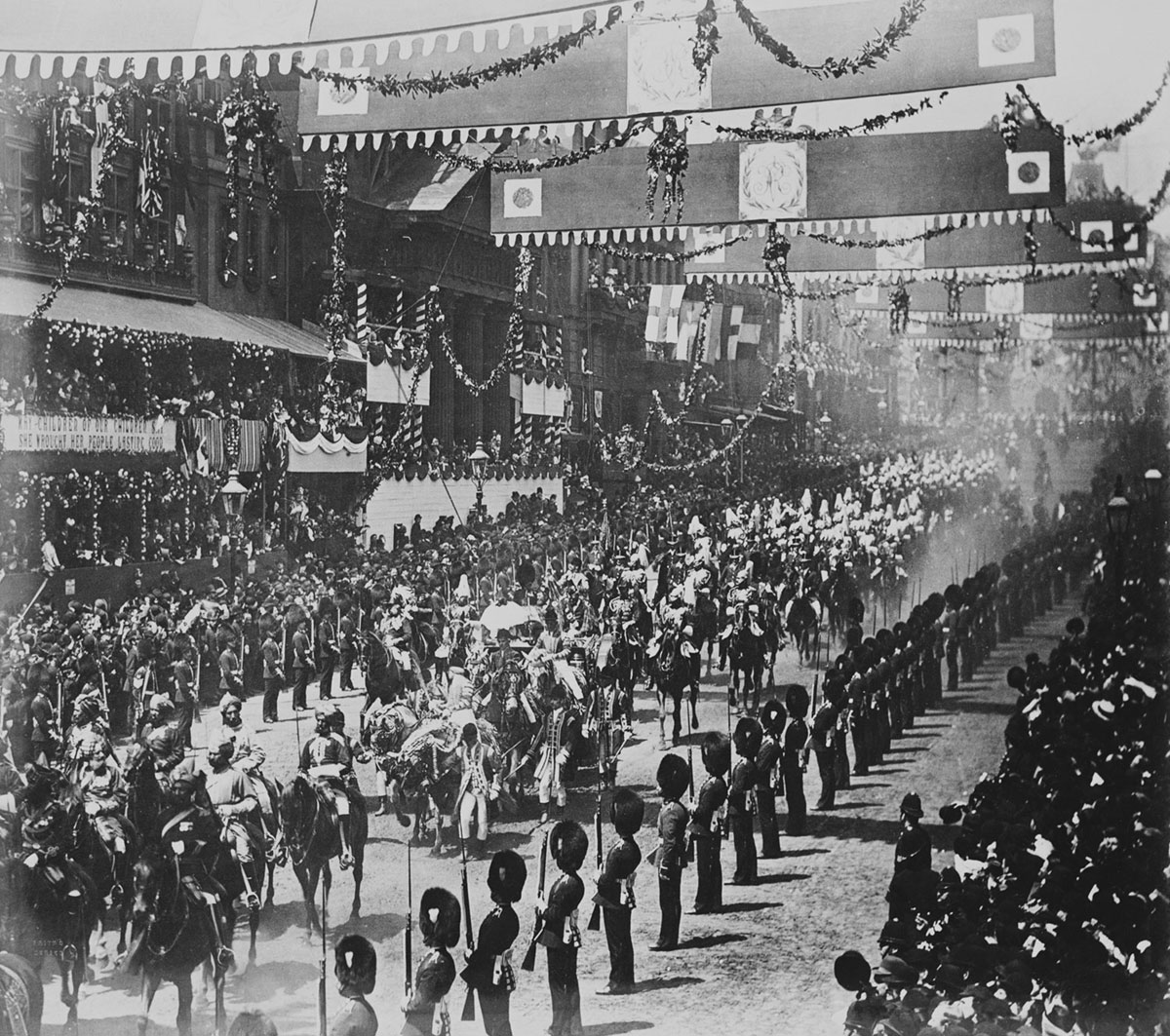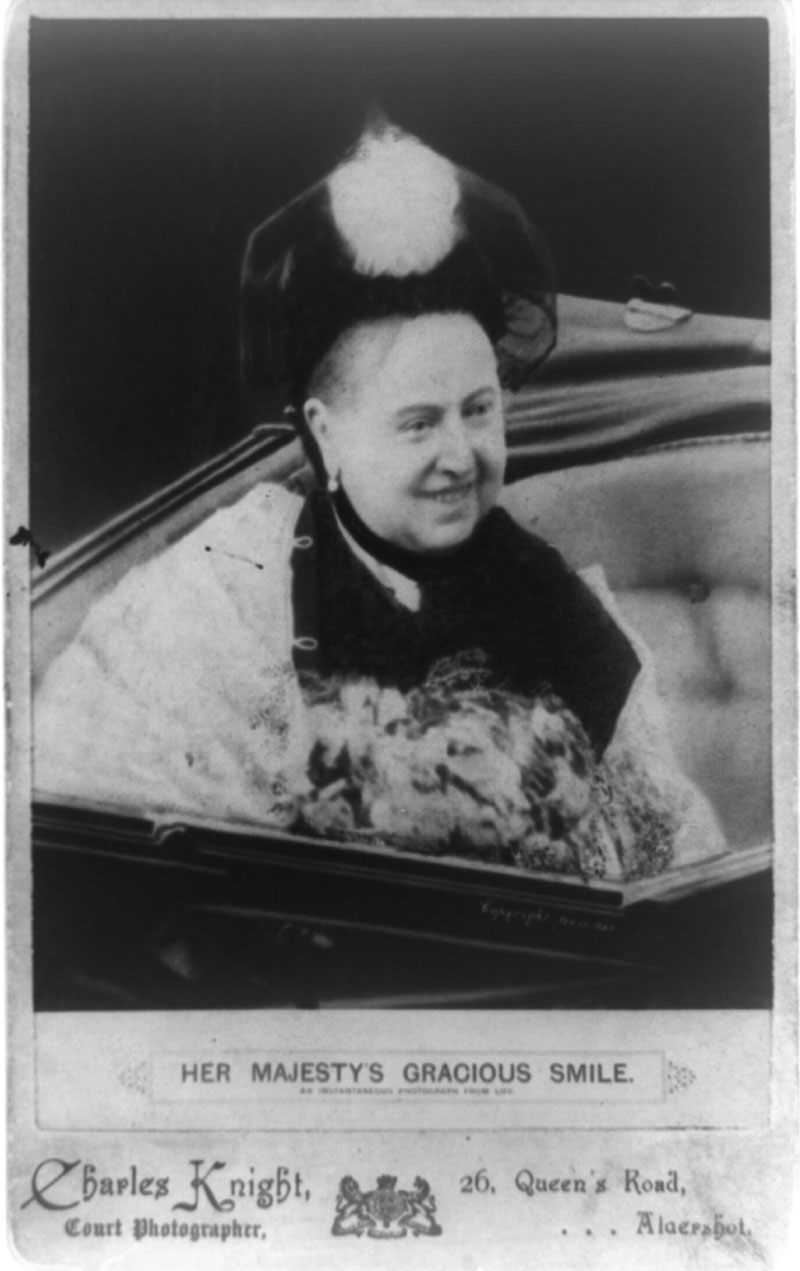In 1887 Queen Victoria celebrated her Golden Jubilee – 50 years on the throne. Over two days, from 20-21 June, she was the guest of honour at a range of events from banquets to building openings, and a carriage procession from Buckingham Palace to Westminster Abbey and back, which concluded with an appearance on the palace balcony.
The days were significant not just as a marker of the length of her reign, but as a marker of her return to public life. Since her husband Albert’s death in 1861, Victoria had been in seclusion.
The London Evening Standard on 21 June 1887 wrote that “so enthusiastic were her subjects in their desire to give her a hearty Jubilee greeting” that “rarely, if ever, has London appeared in such a feverish condition of excitement”. The crowds and decorations that lined the route were, the paper described, a “sight overpowering on the imagination”.
Among the crowd was author Mark Twain, who described how it “stretched to the limit of sight in both directions”.
In her diary, Queen Victoria wrote that “The crowds from the Palace gates up to the Abbey were enormous, & there was such an extraordinary outburst of enthusiasm as I have hardly ever seen in London before, all the people seemed to be in such good humour”.
At the end of the day, she “Felt truly grateful that all had passed off so admirably, & this never to be forgotten day, will always leave the most gratifying & heart stirring memories behind”.
It was a triumph. The Queen’s subjects got to see their monarch again after so long – to see her happy – and Victoria was clearly moved by the enthusiastic reception she received.

Queen Victoria’s Golden Jubilee procession driving through Regent Street, London. She is travelling in the gilded State Landau carriage drawn by six horses, preceded by an Indian cavalry escort. Terraced seating specially erected for the procession can be seen on the left side of the road. The street is decorated with banners, St George’s flags, and floral garlands.
Also among the many in the crowd that day was photographer Charles Knight.
He managed to catch “an instantaneous photograph from life” of the Queen. Standing to the right of her carriage, Knight snapped a head and shoulders shot. In it Victoria can be seen holding a bunch of flowers and – most significantly – she is smiling.
Knight called the photo ‘Her Majesty’s Gracious Smile’ and began selling cabinet card copies.
But what to modern eyes might seem simply a candid photo that captured the spirit of the day, to contemporary audiences was strange, even shocking.

There are likely multiple factors at play in this reaction: from the cultural conditioning created by studio portraits that required long exposure times and mostly straight faces; to perceptions or expectations of the role of a queen as serious and dignified; and fears about the impact (such as invasion of privacy) from new, more portable cameras with shorter exposure times.
In an April 1888 issue of The British Journal of Photography, it “heartily commiserated” with Queen Victoria over the “unfortunate incident” of her being photographed smiling. It described instantaneous photographers as “social pests” and their pictures as the “diabolical arts”.
“The instantaneous photograph is coldly scientific; it catches you as you are in some fraction of a second, and fixes you as probably you never appeared to any one in your life. […] An enterprising photographer caught a picture during the procession which he enlarged and published […] and many people have no doubt bought this picture, and copied for social use the royal laugh. But it is hard upon the Queen, for all that.”
Apparently, though, Victoria was less fussed about the whole thing than everyone else.
Volume 1 (1870-1903) of the Journals and Letters of Reginald, Viscount Esher includes a diary entry recalling a time when Victoria was shown “that grinning ‘Jubilee’ photograph of herself”.
“Her daughters were indignant at its sale in the streets, and wished her to have it stopped. All they could get her to say was: ‘Well, really I think it is very like. I have no illusions about my personal appearance.”


